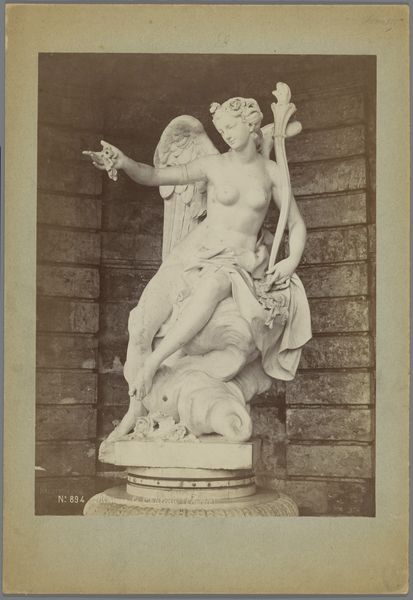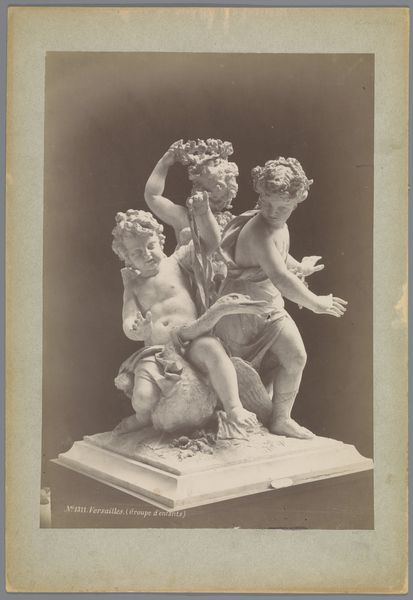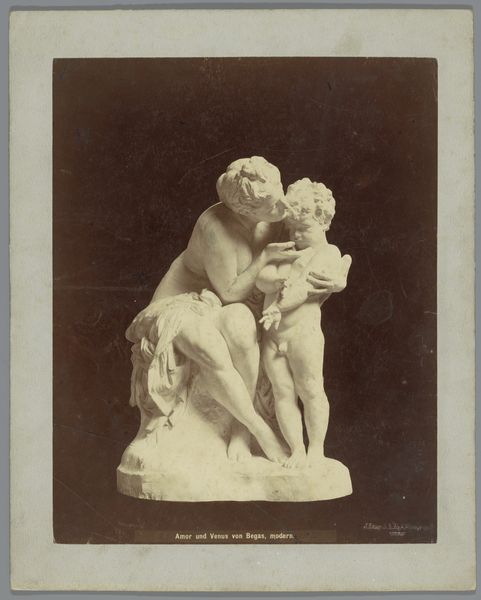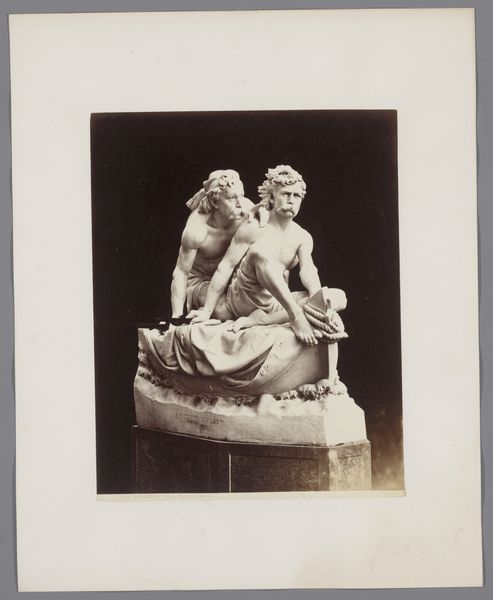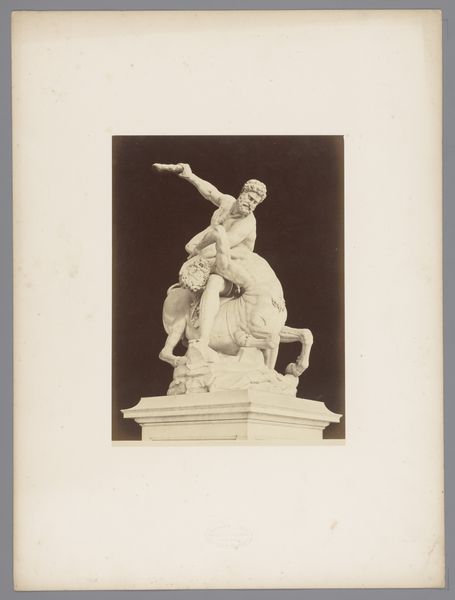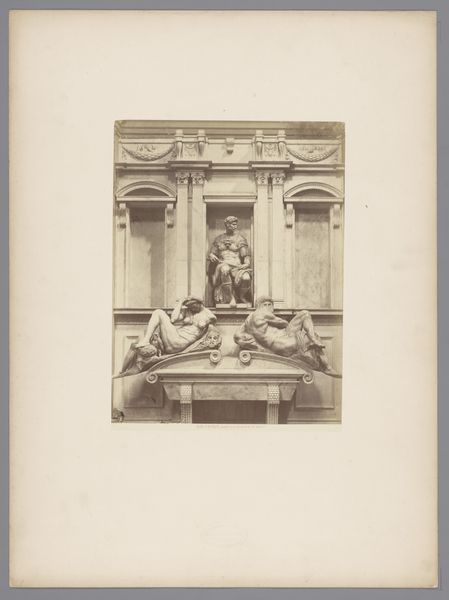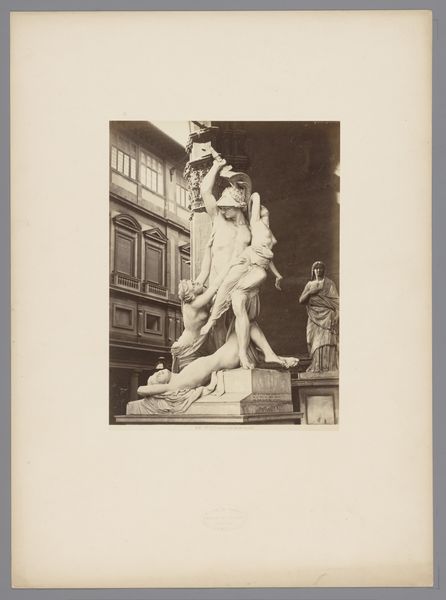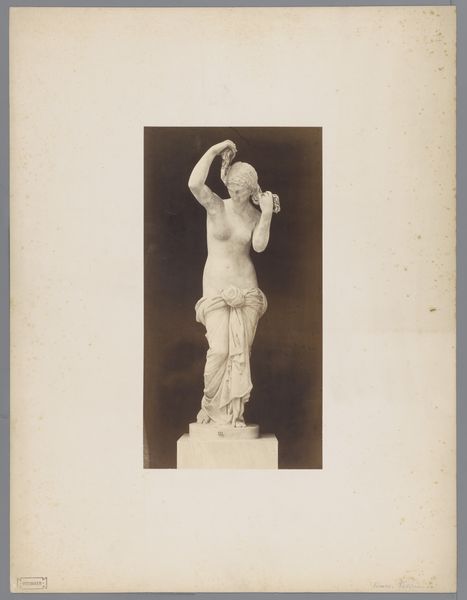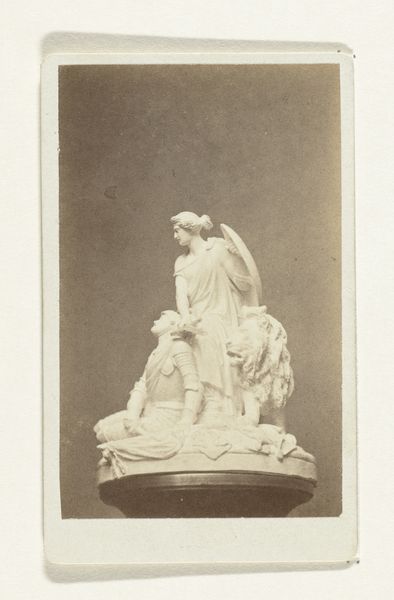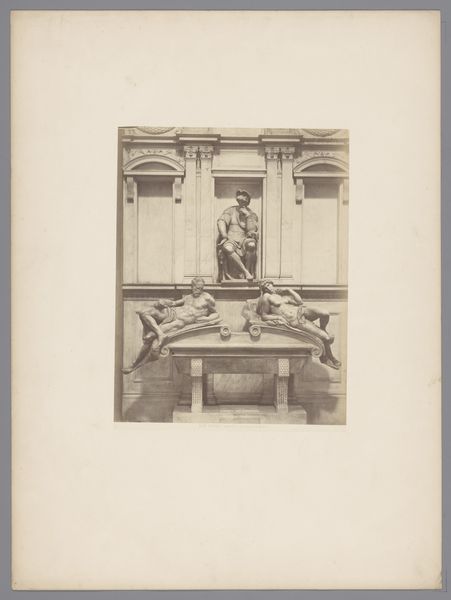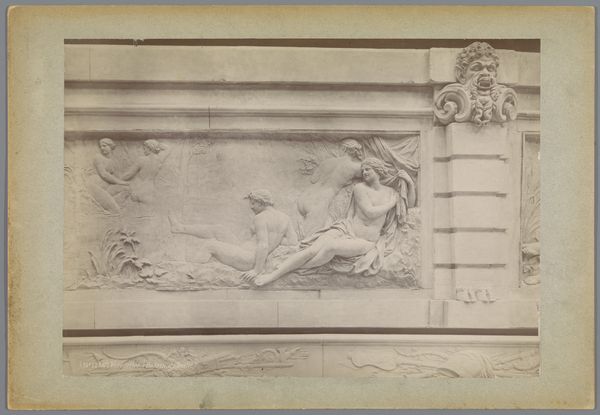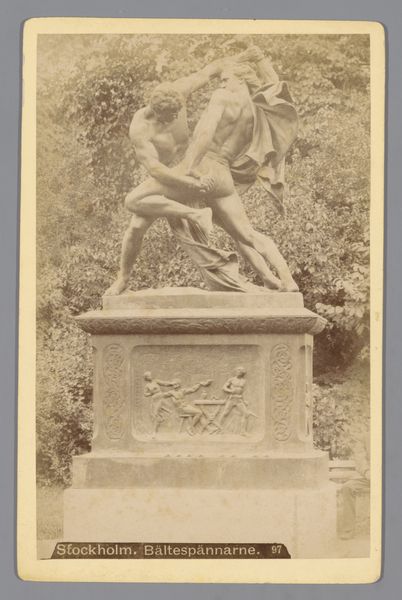
Opstelling van een gipsmodel van een beeldengroep, voorstellende drie putti met een fakkel, met op de achtergrond een gipsmodel van het Bassin des Nymphes de Diane te Versailles c. 1875 - 1900
0:00
0:00
medericmieusement
Rijksmuseum
photography, sculpture, gelatin-silver-print
#
portrait
#
photography
#
sculpture
#
gelatin-silver-print
#
academic-art
Dimensions: height 345 mm, width 250 mm
Copyright: Rijks Museum: Open Domain
This photograph by Médéric Mieusement captures plaster casts, likely around the late 19th century. We see a group of putti with a torch, set against a backdrop of a model of the Bassin des Nymphes de Diane from Versailles. The torch, prominently held aloft by one of the putti, is a powerful symbol, isn’t it? It represents enlightenment, hope, and the pursuit of knowledge. This motif has ancient roots, seen in classical depictions of Prometheus, who stole fire from the gods to give to humanity. Notice the classical imagery in the background, too? These symbols aren't isolated; they echo across time. The torch, for instance, reappears in modern contexts, like the Statue of Liberty, where it symbolizes freedom and the welcoming of immigrants. Think about how such symbols persist, evolving yet retaining a core emotional power. The presence of putti evokes classical ideals and engages viewers on a deep, subconscious level. It is the cyclical progression of symbols, constantly resurfacing and adapting, that reveals the intricate web of cultural memory.
Comments
No comments
Be the first to comment and join the conversation on the ultimate creative platform.
